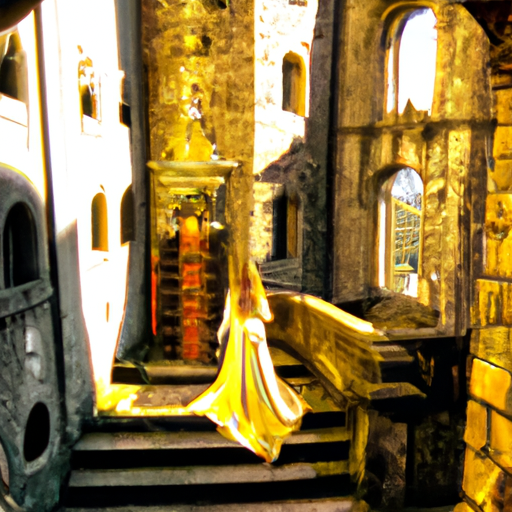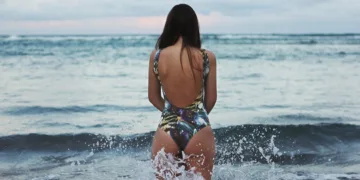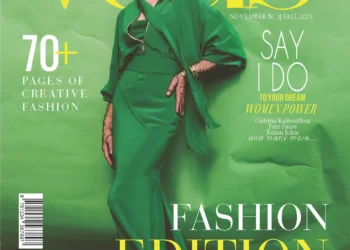Table of Contents
- Introduction
- The Life and Work of Cecil Beaton: A Look at the Iconic British Fashion Photographer
- The Pioneering Legacy of Horst P. Horst: Examining His Impact on Fashion Photography
- Irving Penn: A Retrospective of His Most Iconic Fashion Photographs
- Richard Avedon: Exploring His Innovative Approach to Fashion Photography
- The Artistry of Helmut Newton: Examining His Controversial Style of Fashion Photography
- Conclusion
«Capturing the Past, One Image at a Time»
Introduction
Historical fashion photographers have been capturing the beauty of fashion for decades. From the early days of photography to the modern era, fashion photographers have been documenting the changing trends and styles of the fashion industry. They have captured the glamour of the runway, the beauty of the models, and the creativity of the designers. From the iconic images of Richard Avedon to the modern street style of Bruce Weber, fashion photographers have been an integral part of the fashion industry. Their work has been featured in magazines, advertisements, and even on the walls of museums. Historical fashion photographers have helped to shape the way we view fashion today.
The Life and Work of Cecil Beaton: A Look at the Iconic British Fashion Photographer
Cecil Beaton (1904-1980) was a British fashion photographer, artist, and diarist who was renowned for his iconic images of the 1920s and 1930s. He was born in London and educated at Harrow and Cambridge, where he studied art and design. Beaton began his career as a fashion illustrator for Vogue magazine in 1923, and soon became one of the most sought-after photographers in the world.
Beaton was known for his unique style of photography, which combined elements of art, fashion, and portraiture. He was particularly adept at capturing the glamour and sophistication of the era, and his images often featured celebrities and socialites. He was also a master of lighting and composition, and his photographs often featured dramatic shadows and bold colors.
Beaton was also a prolific diarist, and his diaries provide an intimate look into the life of a fashion photographer in the 1920s and 1930s. He wrote about his travels, his relationships, and his work, and his diaries offer a unique insight into the world of fashion photography.
Beaton’s work has had a lasting impact on the world of fashion photography. His iconic images have been featured in countless books, magazines, and exhibitions, and his influence can still be seen in the work of modern fashion photographers. He was also a major influence on the development of modern fashion, and his work helped to shape the look of the modern fashion industry.
Beaton’s legacy lives on today, and his work continues to inspire photographers and fashion designers alike. He was a true pioneer of fashion photography, and his work will continue to be admired for generations to come.
The Pioneering Legacy of Horst P. Horst: Examining His Impact on Fashion Photography
Horst P. Horst was a pioneering fashion photographer whose work has had a lasting impact on the field. His iconic images, which often featured models in glamorous settings, have become synonymous with the glamour of the fashion world.
Horst was born in Germany in 1906 and began his career as a fashion photographer in the 1930s. He quickly gained recognition for his unique style, which combined elements of classicism and modernism. His photographs often featured models in elegant poses, surrounded by luxurious fabrics and furniture. He was also known for his use of light and shadow, which gave his images a dramatic and mysterious quality.
Horst’s work was highly influential in the fashion world. His photographs were featured in magazines such as Vogue and Harper’s Bazaar, and his images were used to promote the latest fashion trends. He was also a major influence on other fashion photographers, such as Richard Avedon and Irving Penn.
Horst’s legacy continues to this day. His iconic images are still used in fashion campaigns and his influence can be seen in the work of many contemporary fashion photographers. His work has also been the subject of numerous books and exhibitions, and his photographs are now part of the permanent collections of many major museums.
Horst P. Horst was a true innovator in the field of fashion photography. His unique style and vision have had a lasting impact on the industry, and his work continues to inspire photographers today.
Irving Penn: A Retrospective of His Most Iconic Fashion Photographs

Irving Penn (1917-2009) was one of the most influential fashion photographers of the 20th century. His iconic images have been featured in some of the world’s most prestigious publications, including Vogue, Harper’s Bazaar, and Vanity Fair. Penn’s work is renowned for its timeless elegance and sophistication, and his photographs have become iconic representations of fashion and style.
Penn’s career began in the 1940s, when he was hired by Vogue magazine as a staff photographer. He quickly established himself as a master of the craft, creating stunning images that showcased the latest fashion trends. Penn’s photographs often featured models in simple, elegant poses, and he was known for his use of natural light and minimalistic backgrounds. He was also a pioneer in the use of color photography, which he began experimenting with in the 1950s.
Throughout his career, Penn created some of the most iconic fashion photographs of all time. His images of models such as Lisa Fonssagrives, Suzy Parker, and Dorian Leigh have become iconic representations of beauty and style. Penn also photographed some of the most famous celebrities of the time, including Audrey Hepburn, Marlene Dietrich, and Grace Kelly.
Penn’s work has had a lasting impact on the fashion industry, and his photographs continue to inspire photographers and designers today. His iconic images are a testament to his skill and creativity, and they remain some of the most iconic fashion photographs of all time.
Richard Avedon: Exploring His Innovative Approach to Fashion Photography
Richard Avedon is widely regarded as one of the most influential fashion photographers of the 20th century. His innovative approach to fashion photography revolutionized the industry, and his work continues to inspire photographers today.
Avedon was born in 1923 in New York City. He began his career as a fashion photographer in 1945, when he was hired by Harper’s Bazaar. His work quickly gained recognition for its unique style and composition. He was known for his use of bold colors, dramatic lighting, and unconventional poses. He often used natural light and minimal props, creating a sense of spontaneity and movement in his photographs.
Avedon was also known for his use of unconventional models. He often chose models who were not traditionally considered attractive, such as older women, children, and people of color. This was a radical departure from the traditional fashion photography of the time, which focused on young, white, and conventionally attractive models.
Avedon’s work was also characterized by its sense of drama and emotion. He often used his photographs to explore themes of identity, mortality, and the human condition. His photographs often featured models in motion, creating a sense of energy and movement.
Avedon’s work has had a lasting impact on the fashion photography industry. His innovative approach to fashion photography has been widely imitated and continues to influence photographers today. His work has been featured in numerous exhibitions and publications, and his photographs are now considered iconic.
Richard Avedon’s innovative approach to fashion photography revolutionized the industry and continues to inspire photographers today. His bold use of color, unconventional models, and dramatic compositions have made him one of the most influential fashion photographers of the 20th century.
The Artistry of Helmut Newton: Examining His Controversial Style of Fashion Photography
The work of Helmut Newton, one of the most influential fashion photographers of the 20th century, is renowned for its controversial and provocative style. His photographs often featured nude or scantily clad models in provocative poses, and he was unafraid to push the boundaries of what was considered acceptable in fashion photography. Newton’s artistry was characterized by a unique combination of glamour, eroticism, and surrealism, and his images have had a lasting impact on the fashion industry.
Newton’s career began in the late 1940s, when he moved to Paris and began working as a fashion photographer for French Vogue. His photographs were immediately noticed for their daring and unconventional style, and he quickly gained a reputation as a daring and innovative photographer. Newton’s work was often seen as a challenge to traditional notions of beauty and femininity, and he was unafraid to explore the darker side of fashion photography.
Newton’s photographs often featured strong, independent women in powerful poses, and he was unafraid to explore themes of sexuality and power. His images often featured women in positions of dominance, and he was unafraid to challenge traditional notions of gender roles. His photographs often featured women in positions of power, and he was unafraid to explore themes of sexuality and power.
Newton’s work was often seen as a challenge to traditional notions of beauty and femininity, and he was unafraid to explore the darker side of fashion photography. His photographs often featured strong, independent women in powerful poses, and he was unafraid to explore themes of sexuality and power. His images often featured women in positions of dominance, and he was unafraid to challenge traditional notions of gender roles.
Newton’s work has had a lasting impact on the fashion industry, and his photographs are still seen as groundbreaking and influential. His artistry was characterized by a unique combination of glamour, eroticism, and surrealism, and his images have had a lasting impact on the fashion industry. His work continues to inspire photographers and fashion designers today, and his legacy will continue to influence the fashion industry for years to come.
Conclusion
Historical fashion photographers have played an important role in the development of fashion photography. They have helped to shape the way we view fashion today, and their work has been influential in the industry for decades. Their work has been instrumental in creating iconic images that have become part of our collective visual culture. Their legacy will continue to inspire future generations of fashion photographers.


































